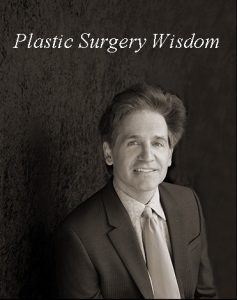
But there are other plastic surgery procedures where the outcome is not always so certain. For example, undergoing a scar revision involves the main risk of uncertainty as to whether it will ultimately be better. This raises a question as to whether one should have the procedure at all. Since there are few absolute guarantees in surgery, how does one know whether they should risk having an operation where the level of improvement is unknown. In some ways, this is a bit like gambling and the patient looks to the plastic surgeon to help them ‘hedge their bet’. In essence, the plastic surgeon in this situation is the oddsmaker.
For the uncertain outcome surgery, the patient should make a decision about having the surgery based on what level of minimum result they can accept. While patients understandably think about plastic surgery hoping for the maximal or best result, opting for surgery with that expectation in uncertain outcome surgeries can be a setup for disappointment.
‘When the outcome of a plastic surgery procedure is not assured, the decision for undergoing it should be based on accepting the lowest level of improvement.’
Dr. Barry Eppley
Indianapolis, Indiana


